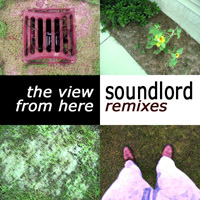don’t kill your mix!
 for a time during college I was a DJ at a radio station in Waterloo, Ontario. Something we were advised to do from time to time during our sets, aside from play a certain percentage of Canadian-made music (referred to up north as CanCon, short for Canadian Content) was play a short recorded clip of our radio station ID that broadcasted our callsign in between or overtop of songs. I did as I was told and added these “drops” to my mixes, but I didn’t like to do it – I felt like I was there to spin music for people, not to advertise our radio station. The fact that the listeners were there and already listening made it seem to me to mean that they didn’t need constant reminders telling them what station they were tuned into!
for a time during college I was a DJ at a radio station in Waterloo, Ontario. Something we were advised to do from time to time during our sets, aside from play a certain percentage of Canadian-made music (referred to up north as CanCon, short for Canadian Content) was play a short recorded clip of our radio station ID that broadcasted our callsign in between or overtop of songs. I did as I was told and added these “drops” to my mixes, but I didn’t like to do it – I felt like I was there to spin music for people, not to advertise our radio station. The fact that the listeners were there and already listening made it seem to me to mean that they didn’t need constant reminders telling them what station they were tuned into!
I listen to a lot of techno mixes, mixtapes, trance music podcasts, etc, and I notice that there seem to be a lot of drops included in today’s mixes. Some of them are tastefully done; others are not. I like listening to DJ mixes by Ferry Corsten, for example, but I find his drops to be annoying – after you’ve listened to a few Corsten’s Countdown podcasts you come to recognize the highly repetitive drops, and they really seem to pull me away from the music. Not to mention they’re way cheesy.
I used to like listening to the mixes of Steve Helstrip, aka The Thrillseekers, and I gave some props to his podcasts on this site some time ago, here. Since then, however, Steve has taken to adding numerous “shout-outs” to his podcasts – poor quality recordings of people calling into an answering machine, saying stuff like, hi Steve, I’m from East London, your music rocks, this goes out to my girlfriend, and so on and so forth – to the point that I can’t listen to his mixes anymore. I’ll be listening to a great groove, and suddenly, poof – the mood is gone, and in its place is some answering machine message. I don’t see the appeal of it.
my recommendation is to do what Andy Moor does in his Moor Music podcasts – give a short drop at the beginning of the mix, a short drop at the end of the mix, and otherwise, let the music play. It makes for much better listening and replayability. A few short words put in here and there about what songs you’ve been playing and who they’re by, and maybe a bit about what you’ve been up to and where you’re going to be spinning live sets in the future isn’t so bad, but as a listener I prefer this sort of thing to be kept to a minimum. I’m there for the tunes, not the chatter.
maybe that’s just me – but I thought it was worth bringing up in a post!





